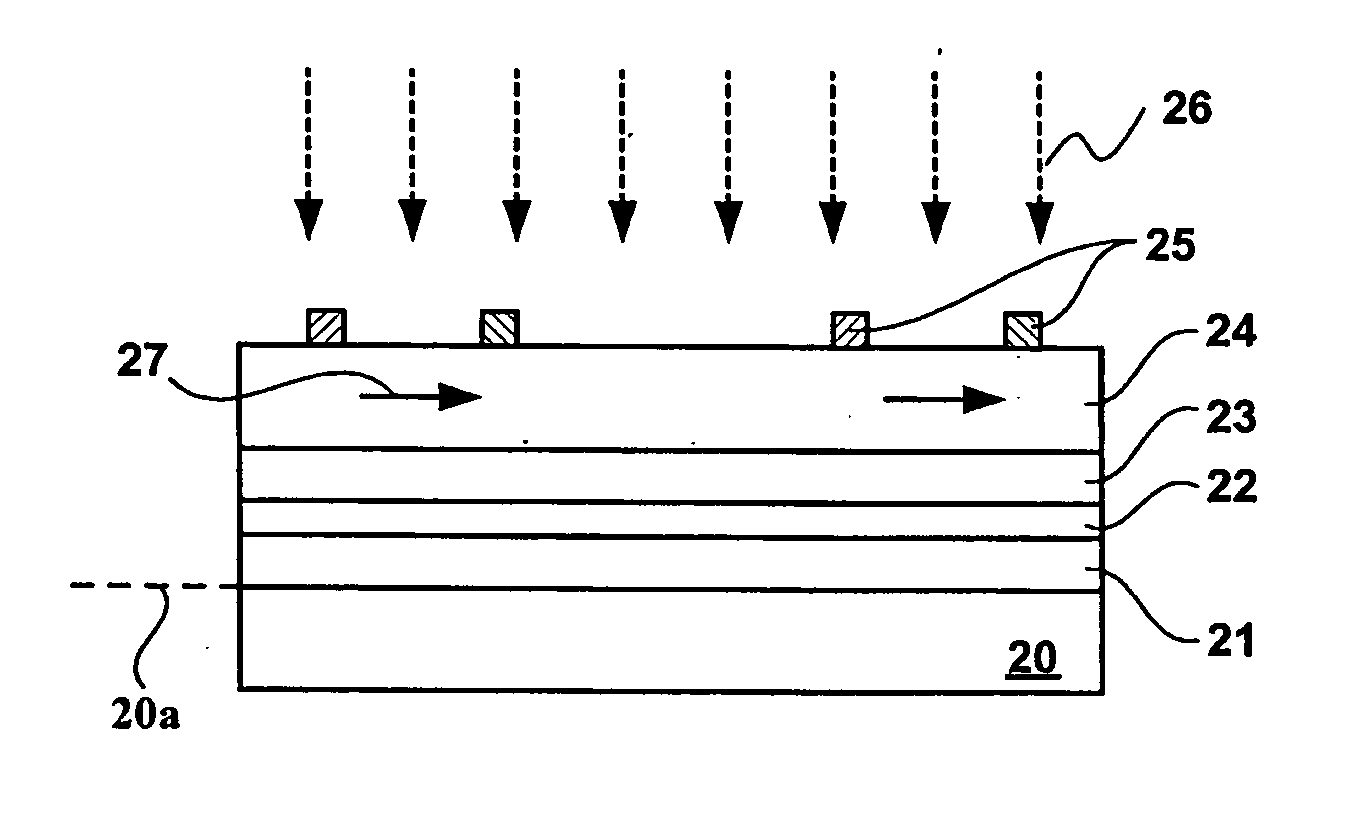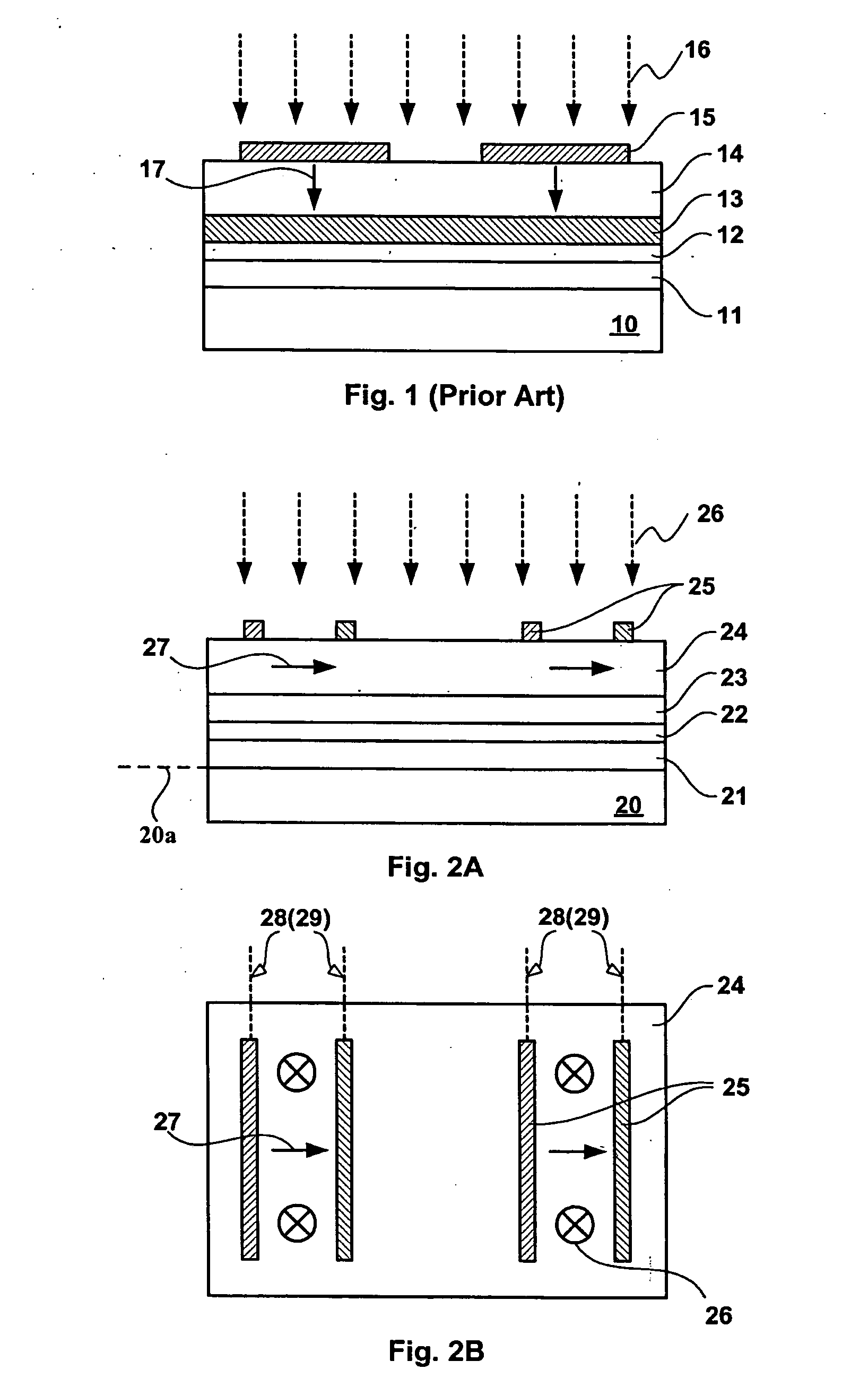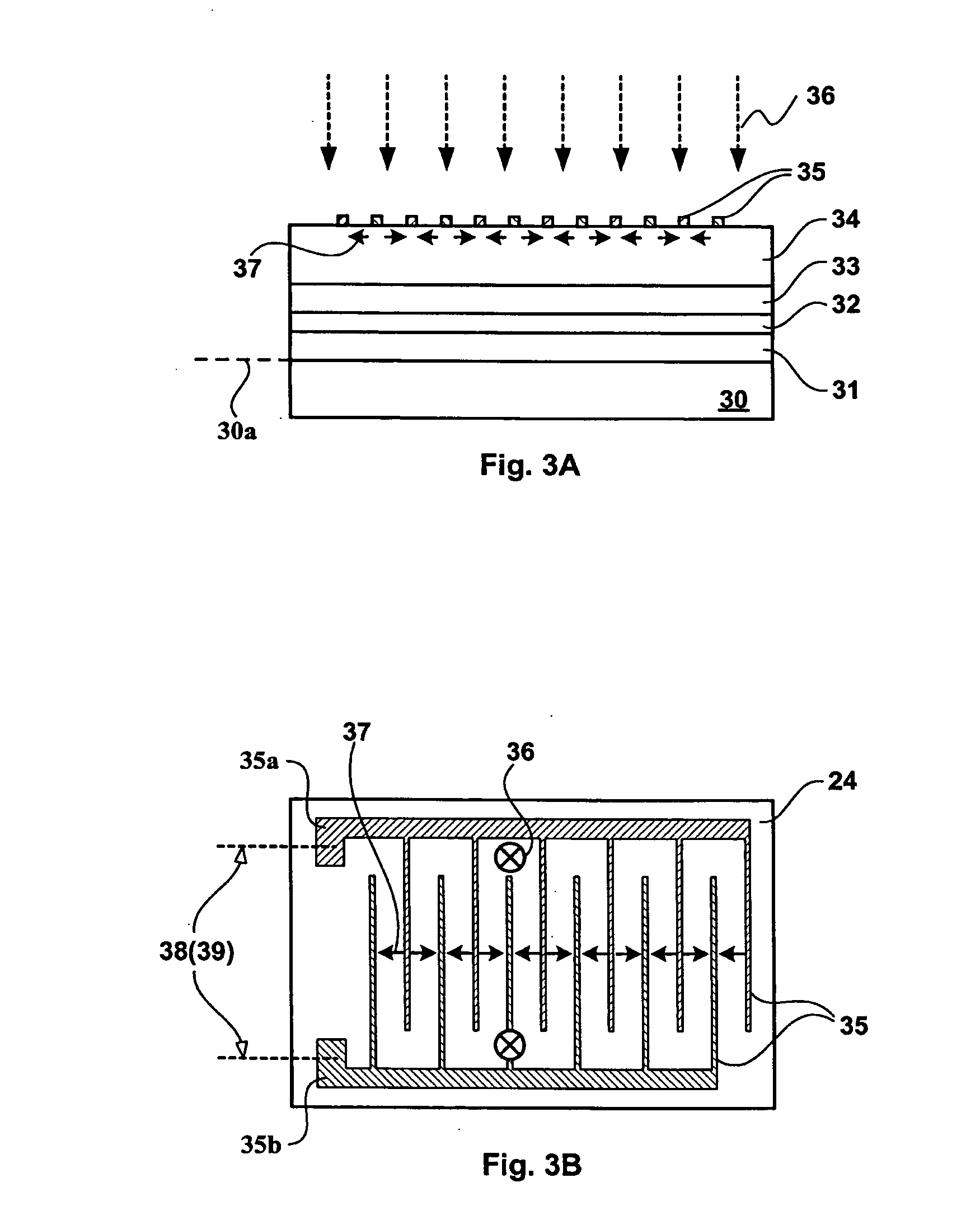Thin film photovoltaic device
a photovoltaic device and thin film technology, applied in the direction of thermoelectric devices, electrical devices with dielectric constant thermal change, semiconductor devices, etc., can solve the problems of increasing the overall volume of the photovoltaic device, increasing the complexity of the device fabrication, and only producing a couple of volts of photovoltaic voltag
- Summary
- Abstract
- Description
- Claims
- Application Information
AI Technical Summary
Benefits of technology
Problems solved by technology
Method used
Image
Examples
Embodiment Construction
[0031] As shown in FIGS. 2A and 2B, a thin film photovoltaic device according to one embodiment of the present invention has a thin film layer, for example a ferroelectric thin film layer 24 formed on a substrate 20. Intermediate layers 21, 22 and 23 may be formed on substrate 20 prior to the formation of ferroelectric thin film layer 24. Intermediate layers 21, 22 and 23 are not all electrically conductive. One or more pairs of electrodes 25 are situated on the top surface of ferroelectric thin film layer 24. One of each pair of electrodes 25 is situated apart from another on the top surface of the ferroelectric thin film layer 24. An electric field 28 is applied between each pair of electrodes 25, to polarize the ferroelectric thin film layer 24. The ferroelectric polarization 27 is therefore aligned in the direction parallel to a main surface plane 20a of substrate 20, and hence parallel to the ferroelectric layer 24. According to this embodiment, when a beam of ultraviolet (UV) ...
PUM
 Login to View More
Login to View More Abstract
Description
Claims
Application Information
 Login to View More
Login to View More - R&D
- Intellectual Property
- Life Sciences
- Materials
- Tech Scout
- Unparalleled Data Quality
- Higher Quality Content
- 60% Fewer Hallucinations
Browse by: Latest US Patents, China's latest patents, Technical Efficacy Thesaurus, Application Domain, Technology Topic, Popular Technical Reports.
© 2025 PatSnap. All rights reserved.Legal|Privacy policy|Modern Slavery Act Transparency Statement|Sitemap|About US| Contact US: help@patsnap.com



